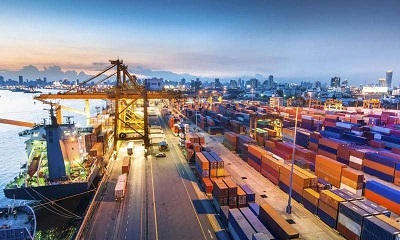
African Continental Free Trade Agreement to benefit Namibia through intra-regional trade

AfCFTA is one of the flagship projects of the Africa Union, a key programme and initiative that has been identified to accelerate Africa’s growth and development by boosting intra-African trade and the Continent’s trading position in the global marketplace.
The agreement to establish the AfCFTA was signed by 44 African Union (AU) member States in March 2018 during the 10th Extraordinary session of the African Union Summit held in Kigali, Rwanda. An extra 5 member States, including Namibia, signed the Agreement during the 31st Ordinary session of the AU Summit, in July 2018 which took place in Nouakchott, Mauritania.
The agreement entered into force on 30 May 2019; Namibia is one of the countries, that has already ratified it and the AfCFTA Secretariat was officially opened in Accra, Ghana on 17 August 2020.
At the recent Africa Summit at Princeton University in the United States under the theme “The Future is African: Post-COVID Economic Recovery Reimagined,” Ms Eunice Ajambo, an economist and the Development Coordination Officer at UN Namibia, did a presentation on AfCFTA as a source of economic stimulus post-Covid, and its contribution to the UN’s Sustainable Development Goals.
She noted that the impetus for AfCTA is founded on its potential to enhance the following:
Economic Growth: AfCFTA is expected to be the largest free trade area since the formation of the World Trade Organisation (WTO). It will comprise an estimated market of 1.3 billion people across 55 countries. The region’s combined GDP is expected to increase by an estimated 1% to 3 % to US$3.4 trillion from the estimated current US$2.6 trillion.
Employment: The loss of jobs is one of the results of Covid-19 with economic downturns presenting uncertainty on the recovery of key sectors including tourism, retail and trade. At mid-point in 2020, estimates were that 34.3 million people would fall below the extreme poverty line in 2020, with 56% of this increase occurring in African countries. Yet, predictions are that employment is to increase by 1.2%, and with 30 million people being lifted out of extreme poverty by 2035 with an increase in incomes, with the implementation of AfCFTA.
Fiscal Space: African countries were already struggling with fiscal space, even before the COVID-19 pandemic, including through lower tax revenue to GDP ratio (17%) than other regions, alongside rising levels of indebtedness and high risk of debt distress. With the collapse in commodity prices, AfCFTA presents opportunities for new sources of revenue, amongst others, through new sectors such as e-commerce.
Regulatory Framework: The implementation of AfCFTA includes the range of instruments and institutions, for instance the Protocol on Trade in Goods; the Protocol on Trade in Services; the Protocol on Dispute Settlement and the related Phase 2 negotiations on Intellectual Property Rights as well as Investment and Competition Policies. When established, these institutions will contribute to strengthening economic governance and the regulatory environment.
Private Sector Development: A core tenet of AfCFTA is its commitment to broadening markets across the continent. Already 80% of the businesses on the continent are SMEs. Moreover, informal businesses are a potential pipeline for formalization as SMEs, lessening fragmentation in the sector and generating economies of scale.
As an accelerator, the implementation of AfCFTA would directly contribute to SDGs on 1) No Poverty; 7) Affordable and Clean Energy; 8) Decent Work; 9) Industry, Innovation and Infrastructure; 16) Peace, Justice and Strong Institutions, 17) Partnerships for the Global Goals, and with spillovers hinged on other SDGs.
The summit underscored the importance of technology like digitalization, e-commerce and cross-border digital trade as a driver and enabler of the SDGs and the related Principles for Digital Governance, and called for the integration of SGD 13 on Climate Action in the National AfCFTA Implementation Strategies and related negotiations at the regional level.
Namibia is one of the countries set to benefit from AfCFTA, particularly with regard to opportunities for economic diversification and value chains development and expansion, as means to economic transformation. Analysis indicates Namibia is set to see its GDP increase by between 4.1% (or US$ 1.85 bn) and 4.2% (or US$ 1.93 bn)).
The country’s exports are to increase between 2.8% (or US$ 640 millions) and 2.9% (or US$ 664 million). Significant gains are to be expected in all main sectors with strong potential to promote industrialization in sectors such as textiles, apparel, leather, milk and dairy products, wood and paper, metals, chemicals, vehicle and transport, electronics and other machinery.
Over 85% of the gains in Namibia’s exports to the rest of Africa would be in industrial products; nearly 10% in agriculture and food with less than 5% in energy and mining.
Namibia’s exports would increase significantly to all African sub-regions outside of SACU covering extension of value chains to countries such as Cameroon, Kenya, Rwanda, Senegal, Tunisia and Zimbabwe. This will offer opportunities to industrialize through regional integration and trade.
Resources: https://www.facebook.com/africasummitprinceton/videos/2465212533778065













































